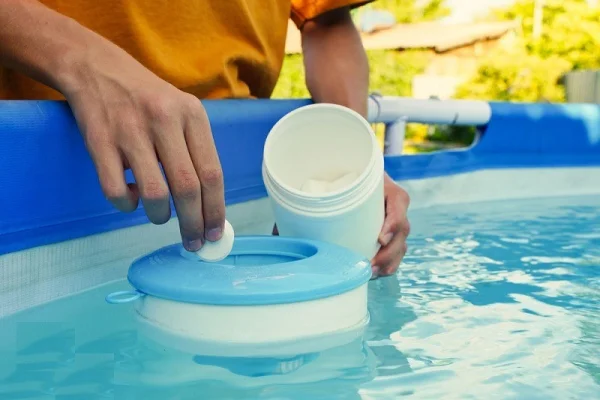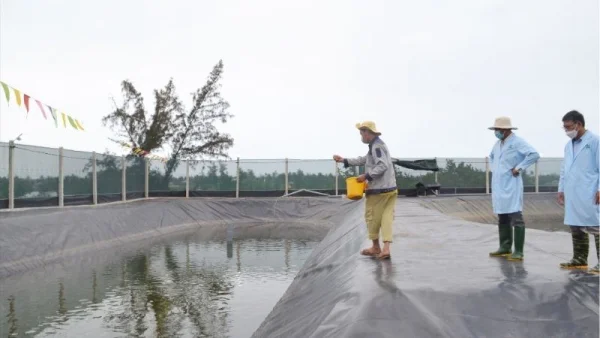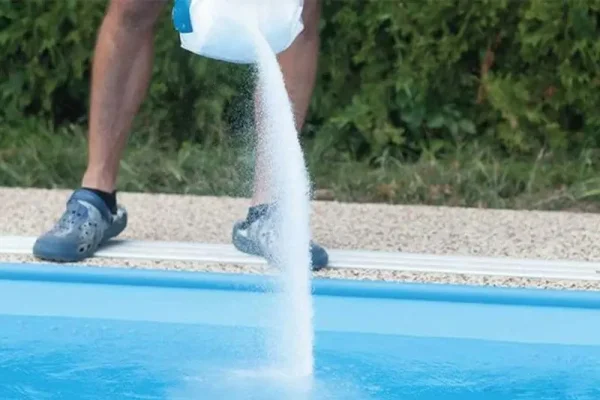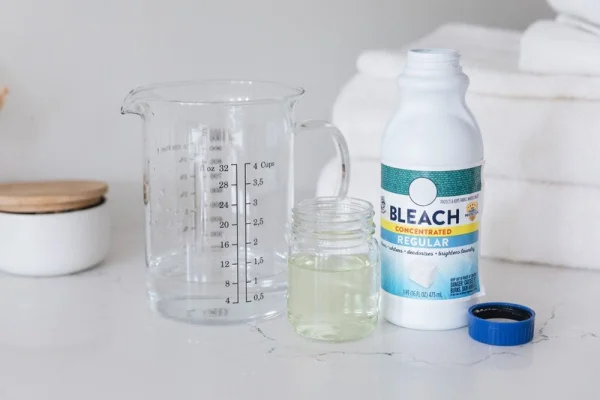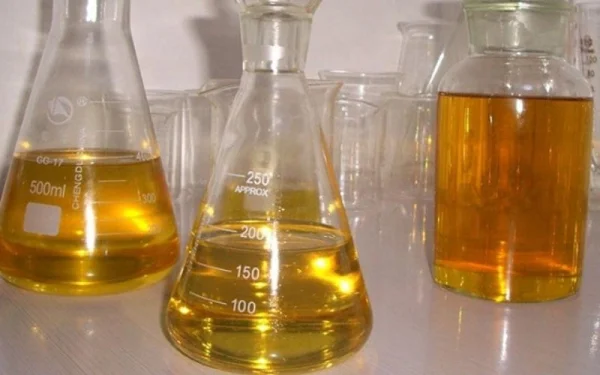
Maintaining a clean and safe swimming pool is crucial for ensuring a refreshing and enjoyable experience. One of the most important aspects of pool care is the proper addition of liquid chlorine, a vital chemical that kills bacteria and microorganisms. In this guide, we'll explore the different types of chlorine, the correct dosage, and the best techniques for adding it to your pool.
Exploring the role of Chlorine in Pool Care
Liquid Chlorine is the backbone of pool sanitation, and for good reason. This chemical compound is responsible for several crucial tasks in maintaining a clean and safe pool:
Sanitization
The primary function of chlorine is to sanitize the pool water by killing harmful bacteria, viruses, and other microorganisms that can pose a threat to swimmers' health. Chlorine works by disrupting the cell walls of these organisms, rendering them ineffective and preventing the spread of waterborne illnesses.
Disinfection
In addition to sanitizing the water, Liquid Chlorine also acts as a disinfectant, helping to eliminate any organic matter or contaminants that may have been introduced into the pool through swimmers, debris, or other sources. This ensures that the water remains free of impurities and ready for safe swimming.
Oxidation
Liquid Chlorine is also responsible for the oxidation of non-living materials in the pool, such as oils, lotions, and other organic compounds. By breaking down these materials, chlorine helps to maintain the clarity and purity of the water, keeping it sparkling and inviting.
Achieving the right balance of chlorine in your pool is essential for keeping it clean, healthy, and enjoyable for all who use it. Knowing the different types of chlorine and how to properly add them to your pool can make all the difference in ensuring a safe and refreshing swimming experience.

Role of Chlorine in Pool Care
Exploring the Different Types of Pool Chlorine
When it comes to chlorinating your pool, you'll find a variety of options available, each with its own unique properties and applications. Understanding the differences between these chlorine types will help you make an informed decision and ensure you're using the right product for your pool's needs.
Trichlor (Trichloro-s-Triazinetrione)
Trichlor, or trichloro-s-triazinetrione, is a highly concentrated and stabilized form of chlorine that is commonly found in tablet or puck form. This type of chlorine is designed to dissolve slowly, providing a steady and continuous supply of chlorine to the pool. Trichlor is a popular choice for regular pool maintenance as it is effective at withstanding the effects of sunlight and other environmental factors.
Liquid Chlorine (Sodium Hypochlorite)
Liquid chlorine , also known as sodium hypochlorite, is a more quickly dissolving form of chlorine that is often used for shock treatments or to quickly raise chlorine levels in the pool. While it is effective at disinfecting and oxidizing, liquid chlorine has a shorter shelf life and can be more challenging to measure and distribute evenly throughout the pool.
Chlorine Powder
Chlorine Powder, such as calcium hypochlorite (cal-hypo) or dichlor, are another option for pool chlorination. These granular forms of chlorine are known for their rapid dissolution and are often used for shock treatments or as a supplemental chlorine source. However, granules require careful measurement and pre-dissolution to ensure they are evenly distributed in the pool.
Other Chlorine Forms
In addition to the more commonly used types, there are a few other chlorine products available for pool treatment, including lithium hypochlorite and saltwater-generated chlorine. These alternatives may have specialized applications or benefits, depending on the specific needs of your pool.
Regardless of the type of chlorine you choose, it's essential to follow the manufacturer's instructions carefully and never mix different chlorine products, as this can be dangerous and potentially cause harmful reactions.
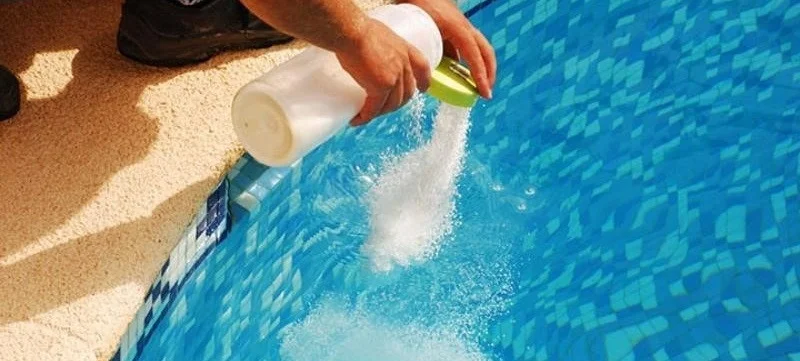
Chlorine in Pool Care
Determining the Right Chlorine Dosage for Your Pool
Calculating the appropriate liquid Chlorine dosage for your pool is crucial to maintaining the ideal free chlorine level, which should be between 1-3 parts per million (ppm) for a standard pool and 2-4 ppm for a hot tub or spa.
Measuring Your Pool's Volume
To determine the correct chlorine dosage, you'll first need to know the volume of your pool. This can be calculated by multiplying the pool's length, width, and average depth, then converting the result to gallons. For circular pools, the formula is slightly different, involving the pool's diameter and average depth.
Once you have the pool's volume, you can round up to the nearest 5,000-gallon increment to ensure you're adding enough chlorine to effectively treat the water.
Adjusting Chlorine Levels
After adding liquid Chlorine to your pool, it's essential to test the water regularly using a reliable test kit to ensure the free chlorine level remains within the recommended range. If the chlorine level drops below the target range, you'll need to add more chlorine to bring it back up. Conversely, if the chlorine level is too high, you may need to dilute the water or wait for it to naturally dissipate.
Maintaining the proper chlorine balance is a delicate dance, and it may take some trial and error to find the right routine for your specific pool. Consistency and vigilance are key to ensuring your pool water remains clean, safe, and ready for swimmers to enjoy.
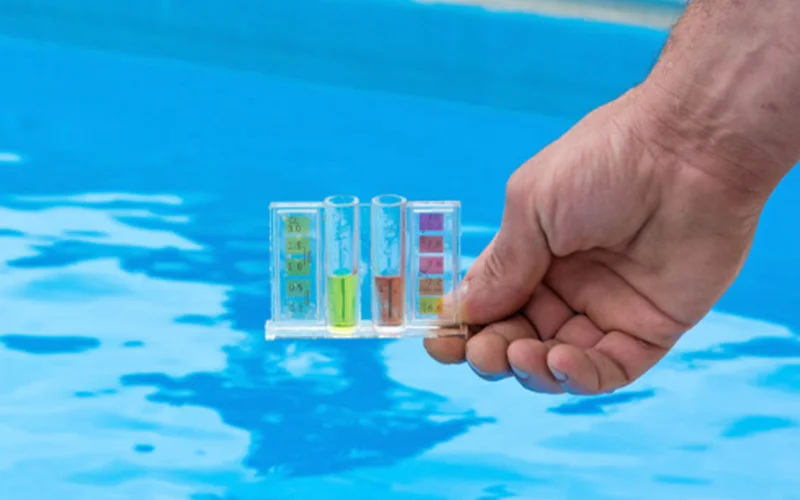
Testing Chlorine Levels
Techniques for Safely and Effectively Adding Chlorine to Your Pool
Now that you understand the different types of chlorine and the importance of maintaining the right chlorine levels, let's explore the best practices for actually adding this essential chemical to your pool.
Using Chlorine Tablets
Chlorine tablets, such as trichlor, are a popular and convenient choice for regular pool chlorination. To use these tablets, you'll typically need a specialized chlorine dispenser or feeder system that can slowly and evenly release the chlorine into the water. This ensures the chlorine is distributed throughout the pool, rather than becoming concentrated in one area.
When using chlorine tablets, it's crucial to never place them directly into the pool's skimmer or pump basket, as this can lead to uneven distribution and potential damage to the equipment.
Applying Liquid Chlorine
Liquid chlorine , like sodium hypochlorite, is another option for pool chlorination. To add liquid chlorine , you'll need to carefully measure the appropriate amount based on your pool's volume and the product's instructions. It's best to pour the liquid chlorine around the perimeter of the pool or directly into the water return line, rather than dumping it in one spot, to ensure even distribution.
Dispersing Chlorine Granules
Chlorine granules, such as calcium hypochlorite or dichlor, require a bit more preparation before adding them to the pool. Start by pre-dissolving the granules in a bucket of pool water, stirring the mixture until the chlorine is fully dissolved. Then, slowly pour the solution around the pool's perimeter, avoiding the skimmer or pump basket.
Regardless of the chlorine form you choose, it's crucial to always wear protective gear, such as goggles and gloves, when handling pool chemicals. Additionally, never mix different types of chlorine, as this can result in dangerous chemical reactions.
Maintaining Optimal Chlorine Levels through Regular Testing and Shock Treatments
Keeping your pool's chlorine levels balanced is an ongoing process that requires regular testing and, occasionally, shock treatments to maintain a clean and safe swimming environment.
Testing Chlorine Levels
Consistent water testing is the key to maintaining the proper chlorine levels in your pool. Aim to test the water at least a few times per week, using a reliable test kit that measures both free chlorine and total chlorine. This will help you identify any fluctuations in the chlorine concentration and make the necessary adjustments.
Shocking the Pool
In addition to regular chlorine maintenance, it's important to perform shock treatments on your pool every 1-2 weeks, or as needed based on factors like heavy use, warm weather, or a buildup of organic matter. Shock treatments involve adding a high concentration of chlorine to the water, typically 5-10 ppm, to quickly oxidize and eliminate contaminants.
Shock treatments are particularly important after periods of heavy use, such as during a pool party or after a storm, when the pool may have accumulated a higher amount of organic matter and debris.
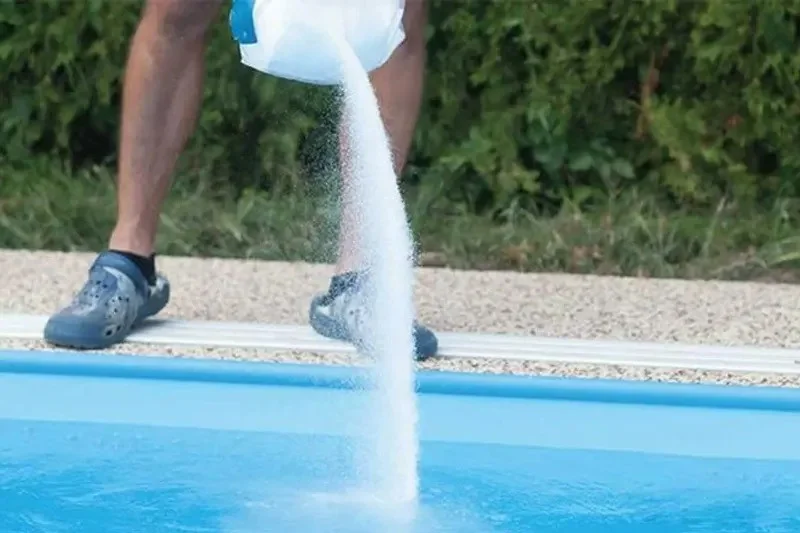
Chlorinate the pool
Conclusion
Maintaining optimal chlorine levels is essential for keeping your pool clean, safe, and ready for endless summer fun. By understanding the difference between liquid chlorine to other types of chlorination methods, calculating the right dosage, and following best practices for safe and effective application, you can ensure your pool remains a sparkling oasis for you and your family. Remember, consistency is key when it comes to pool chlorination, so regularly testing the water and adjusting chlorine levels as needed will help you keep your pool in top shape all season long.
Related Articles
8 Key Uses of Chlorine Tablets
Chlorine tablets are a widely used chemical in various industries, particularly in the field of ...
Chlorine 70: The Powerful Disinfectant
Chlorine is a powerful chemical with strong oxidizing and disinfecting properties. It is widely used ...
Effective Ways to Neutralize Chlorine in Water
Chlorine is a chemical element belonging to the Halogen group, and it has widespread applications in ...
Difference Between Chlorine and Bleach Chemicals
Chlorine and Bleach are powerful oxidizing agents with similar applications in disinfection, ...
Is Chlorine in Water Harmful?
Using chlorine in water to disinfect has helped purify the water and reduce the risk of waterborne ...
In-Depth Overview of Liquid PAC 10% - 17%
Liquid PAC 10% - 17% is currently available in many places on the market as it is a chemical with ...

